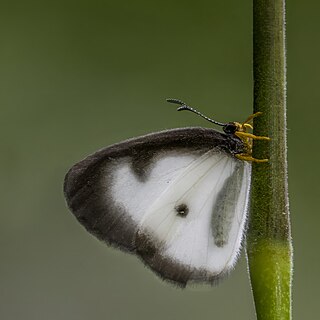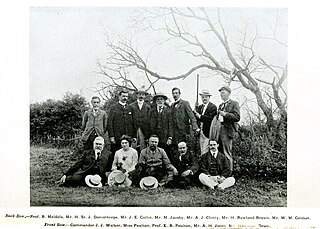
The superfamily Papilionoidea contains all the butterflies except for the moth-like Hedyloidea.

Lycaenidae is the second-largest family of butterflies, with over 6,000 species worldwide, whose members are also called gossamer-winged butterflies. They constitute about 30% of the known butterfly species.

Riodinidae is the family of metalmark butterflies. The common name "metalmarks" refers to the small, metallic-looking spots commonly found on their wings. The 1,532 species are placed in 146 genera. Although mostly Neotropical in distribution, the family is also represented both in the Nearctic, Palearctic, Australasian (Dicallaneura), Afrotropic, and Indomalayan realms.

Lycaeninae, the coppers, are a subfamily of the gossamer-winged butterflies (Lycaenidae).

Miletinae is a subfamily of the family Lycaenidae of butterflies, commonly called harvesters and woolly legs, and virtually unique among butterflies in having predatory larvae. Miletinae are entirely aphytophagous. The ecology of the Miletinae is little understood, but adults and larvae live in association with ants, and most known species feed on Hemiptera, though some, like Liphyra, feed on the ants themselves. The butterflies, ants, and hemipterans, in some cases, seem to have complex symbiotic relationships benefiting all.

Poritiinae is a subfamily of butterflies, the larvae of which are unusual for feeding on algae and foliate lichen.

The Aphnaeinae are a subfamily of butterflies in the family Lycaenidae.

Graphium aurivilliusi is a species of butterfly in the family Papilionidae (swallowtails). It is endemic to the Democratic Republic of the Congo. It is only known from the type series of males.The type specimens is labelled “Congo” only. It may be a form of Graphium agamedes.

George Thomas Bethune-Baker was an English entomologist who specialised in Lepidoptera, especially those in the family Lycaenidae of butterflies.

Ornipholidotos is a genus of butterflies, commonly called glasswings or white mimics, in the family Lycaenidae. The species of this genus are endemic to the Afrotropical realm.

Pilodeudorix is a genus of butterflies in the family Lycaenidae. They are found in the Afrotropical realm.

Hamilton Herbert Charles James Druce was an English entomologist who specialised in Lycaenidae and to a lesser extent Hesperiidae. He is not to be confused with his father, the English entomologist Herbert Druce (1846–1913) who also worked on Lepidoptera.

Graphium abri is a butterfly in the family Papilionidae. It is found in the Central African Republic. and is known from just two individuals both lacking post discal markings.
Pilodeudorix aurivilliusi, the Aurivillius' diopetes, is a butterfly in the family Lycaenidae. It is found in Guinea-Bissau, Sierra Leone, Ivory Coast, Liberia, Ghana and Togo. The habitat consists of forests.
Torbenia is a genus of butterflies, commonly called Zulus, in the family Lycaenidae. They are endemic to the Afrotropical realm. The five species were formerly placed in Ornipholidotos. The genus is named after Torben Bjørn Larsen.
Torbenia larseni, the Larsen's glasswing, is a butterfly in the family Lycaenidae. It is found in southern Nigeria and western Cameroon. The habitat consists of forests. The species was named after Torben Bjørn Larsen.
Torbenia persimilis, the Libert's glasswing, is a butterfly in the family Lycaenidae. It is found in Nigeria, Cameroon and Gabon. The habitat consists of forests.
Henri Stempffer was a French entomologist who specialized in the study of Lycaenidae butterflies.

Thermozephyrus ataxus, the wonderful hairstreak, is a small butterfly found from India to Japan that belongs to the lycaenids or blues family.













